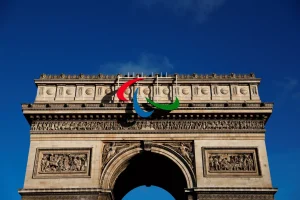Dear Vélib aficionados, get ready to take in some amazing sights and allow yourself to be whisked off on a journey back in time – a time of artists and Emperors, all set against the enchanting backdrop of gloriously peaceful countryside.
We’re going to take you to Rueil-Malmaison today, with its lush-green riverbanks where the Impressionists would go to find inspiration and the castle grounds where the Empress Joséphine once strolled down the estate’s long pathways.
If you want to get away from it all for a couple of hours and have a taste for adventure, then wait no longer – hop on your Vélib’ and let us guide you through this itinerary 😉
Departing from and returning to: Vélib station n°25001 Colmar – Victor Hugo

Make way for the Impressionists

The trip starts at the Place des Impressionnistes, from where there are lovely views of the island of île de Chatou, a never-ending source of inspiration for painters. From Monet and Sisley to Morisot and Manet, not to forget Pissarro, Degas and Caillebotte, all fell for the charms of the shimmering light that seems to emanate from its banks.
If you look a little more carefully, you’ll be able to glimpse the Maison Fournaise, a famous open-air café immortalized by Renoir in ‘Déjeuner des canotiers’ (1880).
Just next to this building, Fauvists André Derain and Maurice de Vlaminck had their studio, which counted Matisse and Apollinaire as regular visitors.
We could perhaps describe this island as having once been a kind of ‘Upper East Side’ of the arts!
Following the Seine upstream, we have the Parc des Impressionnistes, which covers more than a hectare and pays tribute to Claude Monet and his garden at Giverny. Brightly-coloured blooms and water features give this park a real old-world charm.
Fancy a break? Make the most of the garden’s peace and quiet in a cosy gazebo whilst you admire the greenery all around.
Joséphine’s private retreat: The Château de la Petite Malmaison

Let’s leave our Impressionist friends behind to follow in some very famous Imperial footsteps – those of Joséphine.
An iconic figure of the Napoleonic period, Joséphine de Beauharnais, Napoleon’s first wife, was the first Empress of the French. David’s depiction of her coronation in the church of Notre-Dame de Paris on December 2nd, 1804 is one of the most famous paintings in the Louvre. The Imperial couple separated in 1809 due to tensions within the wider family and Joséphine’s failure to conceive an heir. Afterwards, she retreated to the Malmaison estate and remained there till her death. We will travel down the paths of the château’s grounds shortly.
Off in the distance, the château de la Petite Malmaison overlooks Avenue Napoléon. Built in 1805 by the Empress, this one-time pavilion for entertaining guests during the daytime was somewhere where Joséphine felt safe and truly at home. Only her ‘guests of quality’ were allowed access!
A huge hothouse once stood adjacent to the house, testament to Joséphine’s love of botany.
Now a private home and listed building, the house is open all year round to individual visitors and groups (advance booking required for groups).
A little further along towards the Château de la Malmaison is the Atelier Grognard. Built in the 19th century, this beautiful industrial building in the Belle Époque style once housed a factory that manufactured metal plates used in the engraving process.
The building is now an arts space that plays host to numerous special events and exhibitions.
Tracking down the Imperial past: the Château de la Malmaison and the Parc de bois-Préau

Once past the gates of the estate, the history of France will come to life all around you as you stand in front of the château that was built for the Empress and which became the private residence of these two famous lovers. Napoleon gave it to Joséphine after their divorce. She died here in 1814.
The château was also the seat of the French government during the Consulate period. As a result, Napoleon stayed here regularly until 1804, after which he favoured the Château de Saint-Cloud. To this day it possesses beautiful furnishings in the Directoire and Empire styles and gorgeous grounds.
It’s worth pushing on a little further, because you really can’t miss out on the Château de Bois Préau. The château was the Empress’ last property acquisition and was lived in by her doctor. It also houses some of her collection of natural history specimens. Although the château itself is undergoing renovation, the grounds that surround it are well worth visiting. The 17 hectare English garden is a vibrant place, brimming with variety in the shape of rare plant species and centuries-old trees such as Turkish Hazel, Common Hornbeam, Corsican Pine and Giant Sequoia. It’s an eye-opening, sense-awakening experience for young and old alike!
Remember, you cannot bring your bicycle into these castle grounds! Don’t forget to dock your Vélibs at station n°25002 Hôtel de Ville de Rueil-Malmaison or Station n°25004 Marcel Pourtout – Édouard Manet
A side trip through the old town: The church of Saint-Pierre Saint-Paul and the Caserne Guynemer barracks

Now it’s time to lose yourself in the narrow streets of the old part of town. Do you see the elegant façade of the church of Saint-Pierre Saint-Paul? Built in 1633, it was designed by Lemercier, Richelieu’s architect (who was also responsible for one of the buildings of Paris’ oldest university – you guessed it, the Sorbonne! There’s more than a passing resemblance between the two façades 😉).
Although several renovation projects have somewhat changed the original edifice, the Renaissance north-east doorway is still visible.
However, the church’s enduring fame owes more to the fact that it houses the tombs of Joséphine and her daughter, Queen Consort Hortense de Beauharnais.
A few streets along, we come across the Guynemer barracks, which now houses the Museum of the Swiss Guards. Displayed are items and uniforms belonging to this elite unit of the Ancien Régime, which was responsible for the security and safety of the King.
The Swiss Guards were mercenary military units raised in the Swiss cantons who were hired by sovereigns for personal protection purposes and to guard their homes.
Fun fact: The only unit of Swiss Guards still in existence is to be found in the Vatican City!
The Parc de l’Amitié
To finish our trip on a high, what could be better than a celebration of friendship? Before returning to our starting point, let’s make a detour via a little garden that’s a charming – if unexpected – little gem: the Parc de l’amitié.
A real Japanese-style haven of peace and quiet, it’s a wonderful place to let the fragrance of the many aromatic species planted here just waft over you: mint, rosemary, lavender, thyme, sage and more.
If you’ve developed a burning interest in the First French Empire, come back in the springtime when you’ll be able to see a glorious rose garden (over 50 varieties of rose) and take a moment to remember the Empress Joséphine, who loved roses so much.


